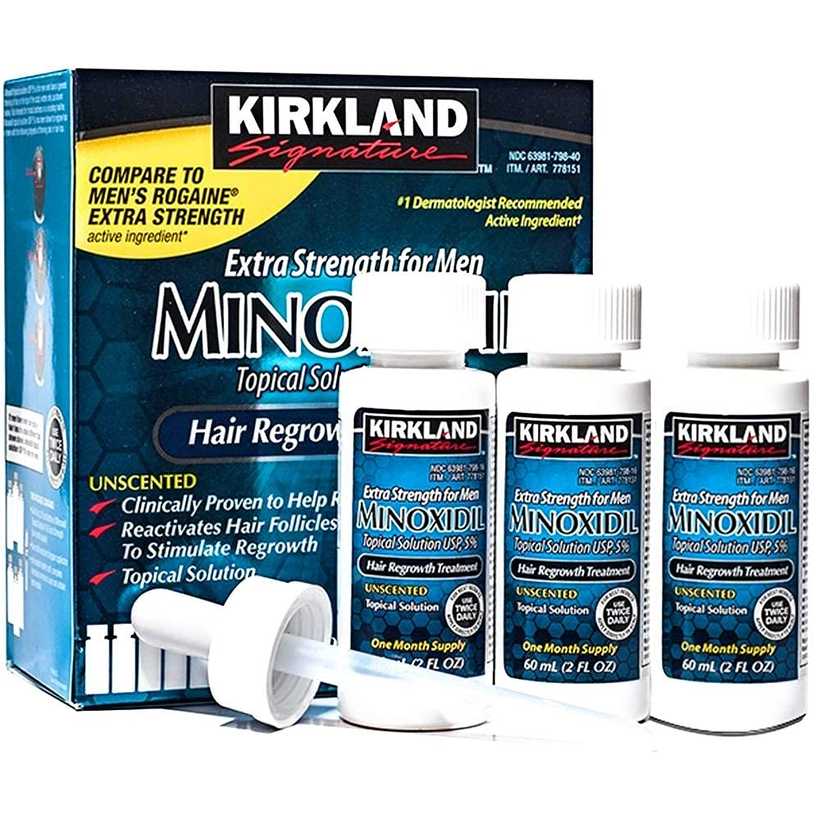Minoxidil was originally developed as an oral medication for treating severe hypertension back in the 1970s. However, some patients who took this medication experienced an unexpected side effect – increased body hair. This discovery led some dermatologists to explore its potential for treating hair loss, marking the beginning of research into minoxidil as a hair loss treatment in 1983.

kirkland minoxidil
© costco.com
Mechanism of Action
The primary action of minoxidil is associated with its ability to dilate blood vessels and promote blood vessel formation. Furthermore, minoxidil is believed to delay the aging of epidermal cells and reduce cell loss. It stimulates the proliferation of papillary cells within hair follicles. While there is still some debate, minoxidil is thought to increase the growth of terminal hairs while decreasing vellus hairs. Additionally, minoxidil is believed to play a role in immune regulation within hair follicles.
Concentrations and Formulations
Minoxidil is currently available in concentrations of 5%, 3%, and 2%. It is formulated as an alcohol-based solution, a foam, and a gel containing propylene glycol.
Applications and Effects
Minoxidil is effective for most cases of male and female pattern baldness and is also used for androgenetic alopecia. Research indicates that minoxidil is more effective at maintaining or increasing the thickness of existing hair than it is at promoting new hair growth. It has shown considerable efficacy in mitigating hair loss due to chemotherapy or telogen effluvium.
Minoxidil Post-Hair Transplant
Minoxidil can be a valuable adjunctive therapy for hair transplant patients. Using minoxidil before and after surgery typically results in reduced hair loss within 1-2 weeks post-op, accelerating the timing of new hair growth. However, it's advisable to discontinue minoxidil a few days before surgery to prevent potential bleeding, as it can stimulate skin irritation and blood vessel dilation.
Side Effects
Prolonged, excessive absorption of minoxidil can lead to hypertrichosis, or the growth of excessive hair, primarily on the face and upper arms. This side effect typically resolves upon discontinuation, but patients with a history of hypertrichosis are advised to begin with a 2% minoxidil solution to minimize these effects. Minoxidil may also cause localized skin side effects such as itching, inflammation, or exacerbation of seborrheic dermatitis. Recent research indicates that these effects are primarily attributed to propylene glycol, a component of the solution, rather than minoxidil itself. Minoxidil can be harmful to pregnant or breastfeeding women. If you plan to have children, it is best to wait until after pregnancy and breastfeeding to use minoxidil. Unfortunately, discontinuing the medication may lead to the loss of the hair that was previously gained due to minoxidil use.